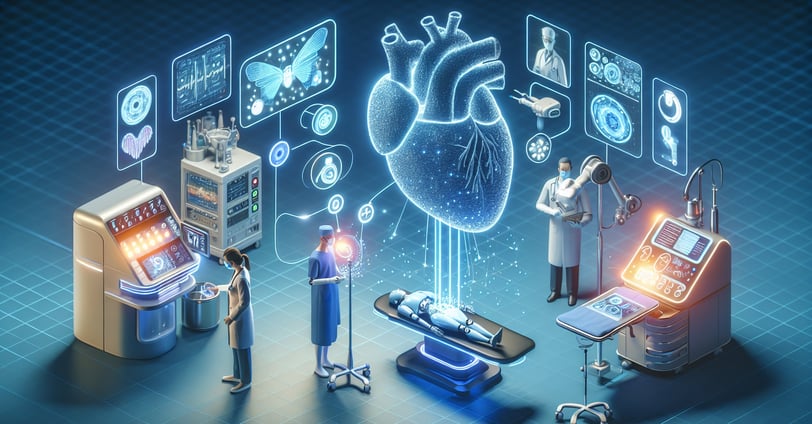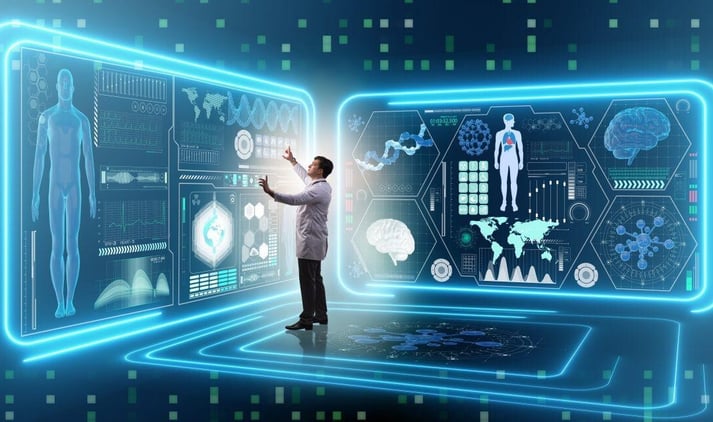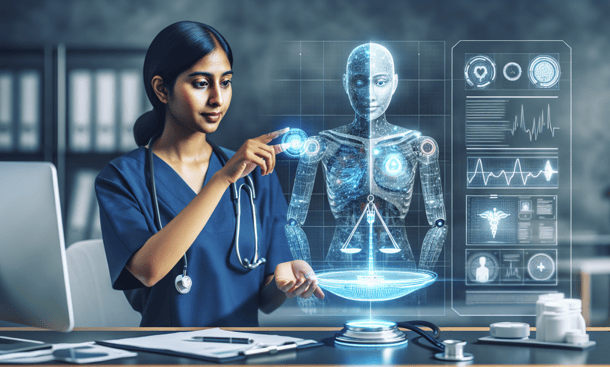X-rays and the Future of Artificial Intelligence in Healthcare
In recent years, the intersection of X-ray technology and Artificial Intelligence (AI) has marked a transformative shift in healthcare. AI’s potential to enhance the capabilities of X-rays is not just a trend; it is an evolution in how healthcare professionals diagnose and treat patients. As we look to the future, the integration of AI into radiology promises to improve diagnostic accuracy, speed, and patient outcomes. In this blog, we’ll explore how AI is shaping the future of X-ray imaging and its impact on healthcare.
2/25/20255 min read


What is Artificial Intelligence in X-rays?
Medical Artificial Intelligence is a phrase utilized to describe the application of machine learning and deep learning algorithms in analyzing complex medical information, for instance, X-ray images, for diagnosis or prediction purposes. When applied to X-rays, AI technology learns to detect patterns in imaging data that may be challenging to visually detect by human eyes and hence provide useful explanations alongside assisting radiologists to provide more accurate diagnoses.
How AI is Enhancing X-ray Technology
Faster and More Accurate Diagnosis
AI X-rays can scan an image faster than human radiologists. With advance algorithms, AI can highlight anomalies such as breaks, tumors, or the manifestation of disease within seconds. As an example, in chest X-rays, AI can detect developing pneumonia, lung cancer, or tuberculosis, permitting doctors to introduce treatment much sooner than previously.
Machine learning algorithms, particularly convolutional neural networks (CNN), are being used to detect even the smallest of anomalies in X-rays, which may be easily missed by the human eye due to fatigue, distraction, or variation in experience. Such accuracy can significantly reduce the likelihood of misdiagnosis, thereby improving patient care.
Improved Radiologist Productivity
AI does not replace radiologists but supports them. By accelerating the initial stages of image interpretation, AI can rule out normal findings, thus allowing radiologists to focus on difficult or indeterminate cases. This maximizes the process in hospitals and clinics, saving time and allowing healthcare providers to handle more cases efficiently.
For instance, computer vision assists in quickly screening routine X-rays at high-volume hospitals and keep the radiologists' calendars open for emergencies, thus speeding up the diagnosis as a whole.
Enhanced Image Quality
AI also assists in image quality improvement in X-rays. Advanced algorithms eliminate noise, increase resolution, and even reconstruct 3D from 2D X-rays. This improves images to be better, clearer quality images, and these are essential for accurate diagnosis, especially in diseases with multiple complexities like fractures of the bones, lung pathology, and heart disease.
Moreover, AI has the ability to optimize X-ray protocols such that patients are given only the bare minimum of radiation required to yield the sharpest image possible. This is on top of augmented safety features in diagnostic imaging.
Predictive Analytics and Early Detection
AI may be blended with X-ray imaging technology to predict the probability of specific diseases even before symptoms have developed. AI can spot early warning signs for diseases such as cancer, heart disease, and even rare genetic diseases by recognizing patterns in huge amounts of imaging data.
Such forecasting potential comes in handy where high-risk groups exist for specific conditions, such as the aged, history of disease families, or exposed to outside determinants such as smoking. Precocious identification of disease states will ensure better treatment as well as outcomes.
Radiology Workflow Integration and AI Assistance
AI is capable of restructuring the radiology process from inputting patient information to ultimate diagnosis. AI processes are able to automatically rank, sort radiography images, and identify critical cases to prioritize viewing. Radiologists would then face a less onerous exercise of viewing images and dictating diagnoses.
Artificial intelligence software can also learn from massive databases of patient images and patient records, enabling them to improve their performance over time. This capability to learn means that AI software is more accurate and efficient over time and provides even greater assistance in the future.
AI and X-ray in Specific Healthcare Applications
Breast Cancer Detection (Mammography)
AI is also found to be useful in detection of early signs of breast cancer through mammography. The computer program is capable of analyzing radiography picture of a mammogram for early signs of cancer, which in any other case would not be detected by radiologists. AI software will definitely assist radiologists in making correct decisions, reduce false positives and enhance outcomes.Chest X-rays for Lung Diseases
In lung disease, AI can diagnose pneumonia, tuberculosis, and lung cancer by analyzing chest X-rays. According to chest X-ray examination, AI software can find suspicious lung areas so that treatment at an early stage with more targeted treatment procedures can be adopted.Orthopedic Imaging
In orthopedic practice, AI will be better at detecting fractures, arthritis, and other bone disorders. AI software can detect fractures in most areas of the body—most importantly in complex areas like the spine or pelvis—where tiny fractures are not detectable by a human radiologist.Dental X-rays
AI can hugely improve diagnosis of dental condition such as cavities, gum infection, and jawbone abnormalities in dental radiology. With sharper and faster analysis, AI systems can help dentists make more accurate decisions regarding patient treatment.
Ethical and Practical Considerations
Although the area of AI for X-ray imaging is enormous, there are some ethical and practical issues that have to be faced:
Data Privacy: Artificial intelligence technology requires big datasets to train algorithms. Patient information must be maintained private and, simultaneously, must also comply with regulations like HIPAA (Health Insurance Portability and Accountability Act).
Regulation and Standards: The regulatory authorities must create guidelines on how to get AI-based X-ray systems certified based on current medical standards and safety protocols.
Human Oversight: Despite all the capability of AI, human skills cannot be replaced. AI should be used to assist radiologists, not replace them. Human skills are not obsolete, particularly with unclear or novel cases in which AI might not have sufficient information to answer in the affirmative.
The Future: AI and X-ray in Personalized Medicine
With advancing technology, AI can be a force behind future personalized medicine. With the ability to read patient information and X-rays, AI software would allow physicians to tailor treatment according to each patient's unique condition, genes, and lifestyle.
AI will then be able to work with genomics and other health technology in the coming future to provide highly personalized diagnosis and treatment plans. This can lead to better long-term healthcare results, as the treatment plans will be custom-made to tackle the distinct needs of the patient individually.
Conclusion: A Promising Future
The combination of Artificial Intelligence and X-ray technology is a new beginning in the provision of healthcare innovation. In the future, AI may enhance diagnostic accuracy, make radiology processes more efficient, and deliver care more effectively overall. xraybazar.com anticipates the application of AI to transform healthcare and continues to provide the latest in X-ray solutions with such innovative technologies.
With adoption of AI technology in X-ray imaging, physicians are able to provide more precise diagnoses, earlier detection of diseases, and ultimately improved patient outcomes. The future is molded by increased innovation and innovations in AI where there will be additional advantages from this technology, a future of speeding faster medical imaging quicker, of better quality, and tailored as ever before.
References:
Mayo Clinic. (n.d.). "AI in Healthcare: The Promise and Future." Mayo Clinic
Radiological Society of North America. (2021). "AI and Radiology: What You Need to Know." RSNA
National Institute of Biomedical Imaging and Bioengineering. (2022). "AI in Medical Imaging." NIBIB




Innovative
Contact Us
Service
xraybazar.com
© 2024. All rights reserved.
Address- Rajasthan, India
Gmail Id- xraybazaroffcial.com
Important Links
